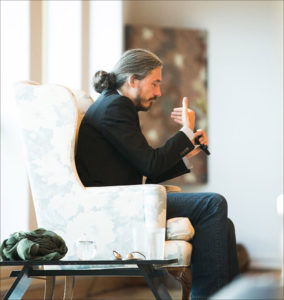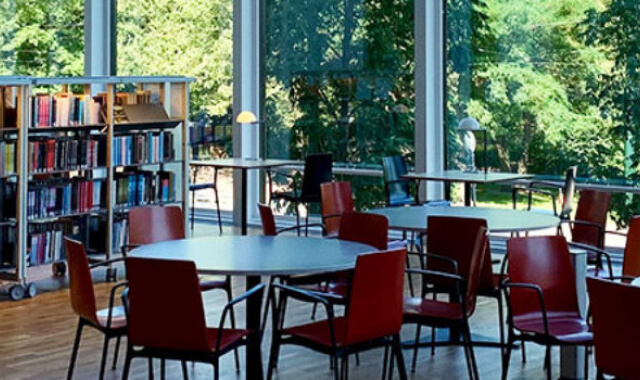by Thomas Hübl, Select Excerpts
 Abstract
Abstract
Much of human existence is filled with psychological trauma, yet there is limited investigation of the ubiquitous nature of traumatic experiences as part of our daily lives. Clinical diagnoses address the medical conditions related to trauma, yet more examination, research, and investigation are necessary to understand the multiple layers and complexity of the impact of both individual and collective trauma, and to develop innovative interventions and processes to heal. In the 21st century, we are facing an enormity of pressing challenges, many of which have at their source buried collective traumas, across cultures, throughout history, and spanning generations. In this dissertation, I examine both the phenomenon of collective trauma and a group process for integration and healing of individual, ancestral, and collective trauma that focuses on an embodied, relational approach rooted in mysticism and self-reflection.
From the Introduction
Many of us are aware of the manifest ways that unhealed trauma can create long-term personal pain and developmental problems for individuals. What is perhaps less well understood is how unhealed collective trauma may bear similar burdens on the health of human cultures and societies, even placing our planetary home at risk. In opening up study on a rich and complex phenomenon as collective trauma, it’s important to note that some of the deepest atrocities that human beings are experiencing continue to unfold as I write this text, and that in the depth of those experiences, survival takes precedence—no active research process is possible on the ground. In light of this, I also dedicate this work to the unseen, silent pain that has not been heard yet, and the regions and communities of the world that need our highest competencies, witnessing, and constant attention to contribute our solutions.
Some of the deep wounds and consequent scars caused by past collective traumas, the consequence of ethical transgressions as part of war and other forms of oppression against others, are visible in our cultures. Other traumas are chronic and systemic. We see the hallmarks of trauma in our healthcare systems, governments, and other cultural, civil, and social bodies. These scars appear as fractures in the social fabric of society itself. These manifestations are still widely misunderstood as simply cultural, such as racism, gender violence, climate trauma, and the deleterious use of technology and social media. Our attention goes to these manifestations, but not necessarily to the root causes. Blind acceptance of these symptoms as “normal” must be resisted. “In the long run, the problem with collective trauma is that people come to see the inhumanity they experience as a natural feature of human life,” writes psychoanalyst Eberhard Riedel (2017).
Yet, many of these signs and symptoms are entirely invisible, and in my understanding, have a tremendous impact on our health. The insidious nature of hidden rage, quiet grief, and widespread chronic stress finds its way into our bodies often as allostatic load, which is magnified stress on our body systems. This hidden collective trauma can form into absencing and numbness, which permeates the collective unconscious, below the surface of our awareness. I believe our work is to understand both the obvious and silent symptoms, so they can be revealed to free our developmental and healing impulse as human beings. My experience has taught me that trauma has much to teach us if we are willing to learn. In group settings, a field of resonance and coherence, which is the subject of this dissertation, can be skillfully nurtured to invite this healing process.
Approach and Research Methods
As I describe throughout this dissertation, my path as a mystic and spiritual teacher led me to this work on collective trauma. The students and retreat participants who attended my first retreats in the early 2000s, some of whom were descendants of victims or soldiers in World War II, expressed symptoms, which I observed as those of traumatic stress. Together as a group, we began to uncover some of this buried hurt, forming a safe environment that valued mutual presence, meditation, support, and attunement to one another. Over the years, I’ve deepened and refined this method of facilitation, which I continue to do as part of each teaching event.
To study this unique method, I believe that relying solely on traditional research methods alone may yield a limited set of findings. In surveying the literature on psychology, philosophy, and social policy, I’ve come to appreciate the breadth of study on collective trauma, mindfulness, and spirituality. Now more than ever, the role of science and evidence-based research is critical to solving our most complex scientific and medical problems, and the undervaluing of science is becoming detrimental to public health. However, when we study the subjective experience of transcendence, mysticism or mindfulness, and even collective trauma, I am also interested in the evolving areas of research design such as heuristic inquiry and transpersonal research, which open new pathways for understanding and tracking interiority.
As professional practitioners continue to employ new methods in research, novel modalities in working with clients, patients, and groups involving contemplation, mindfulness, and group presencing can be evaluated, usually with low risk, which proves critical during a time when mental health disorders are at an all time high, as described by one expert as a “pandemic within the pandemic” (Fava, 2021).
Trauma that is Not Diagnosed
While clinical advances have provided much needed interventions for traumatic stress and PTSD, there is a tremendous need to support the prevention of these disorders, and to find ways to discover and heal the invisible traumas that exist in our cultures before they become full blown disorders. The fulcrum of my work rests in the center of a spectrum of healing—to begin to recognize the buried, unconscious patterns of chronic stress, tracing them back to their source, and to regulate and ultimately restore our self-healing mechanisms. In this way, the principles of the IACTIP are interwoven into every group event, course, or training, but the focus is not always directly on collective trauma. The questions I pose in this dissertation aim to generate innovative solutions to serve this unmet need.
Learning from the Process Itself
In this dissertation, I attempt to examine collective trauma and propose research questions through sensing within, rather than from solely a cognitive analysis of all that we perceive to be outside of ourselves. Most important, the research method is a living process that is rooted in the movement of relationality, the unfolding of moment-to-moment insights, shifts, and clarity that become available in the process with and among participants.
The most significant “findings,” therefore, are discovered in the stages of process awareness itself, in the mapping of the fine-tuned details that shape the movement of our transpersonal development. It’s important to note that in my role as a teacher—and as facilitator who leads a group process—I’m outlining a vision that invites curiosity, participation, and discovery. My passion is to convey the images, pointers, and metaphors as the territory itself, not merely as representations of the territory. The invitation is to learn directly from what I call “the book of life,” the emergent, direct source of experience and information.
As we open up to this way of learning as a group, we invite higher sources of intelligence and presence to enter in our beings. Together we form and in-form our emerging body of knowledge. For example, while working with a group that spontaneously begins sharing narratives that reflect intergenerational trauma, I am guided by both the science and the emergence from within the group itself. This emergence, in which I mean “coming into view, becoming a new form,” might come through language, tone of voice, emotionality, somatic experiences, and the interconnectedness of these phenomena among all the participants.
To follow this calling is to honor the unfolding of this work that organically developed over the last two decades. This process of allowing for the synchrony of information and movement to guide my teaching and facilitation underlies the writing method of this dissertation. The recognition that a spiritual, mystical path can be a doorway to seeing, acknowledging, integrating, and healing collective trauma has inspired me to continue this work and share it with others throughout the world. Because there are many compositions and configurations of relationships that both cause and heal trauma, examples, references, guidance, and contemplations throughout this text focus on various models and interactions: therapist-client relationship, personal relationships, systems and organizational structures, and group dynamics.
Thomas Hübl – Excerpts from “A New Paradigm for Healing Collective Trauma: A Process Based on the Mystical Principles of Healing”
